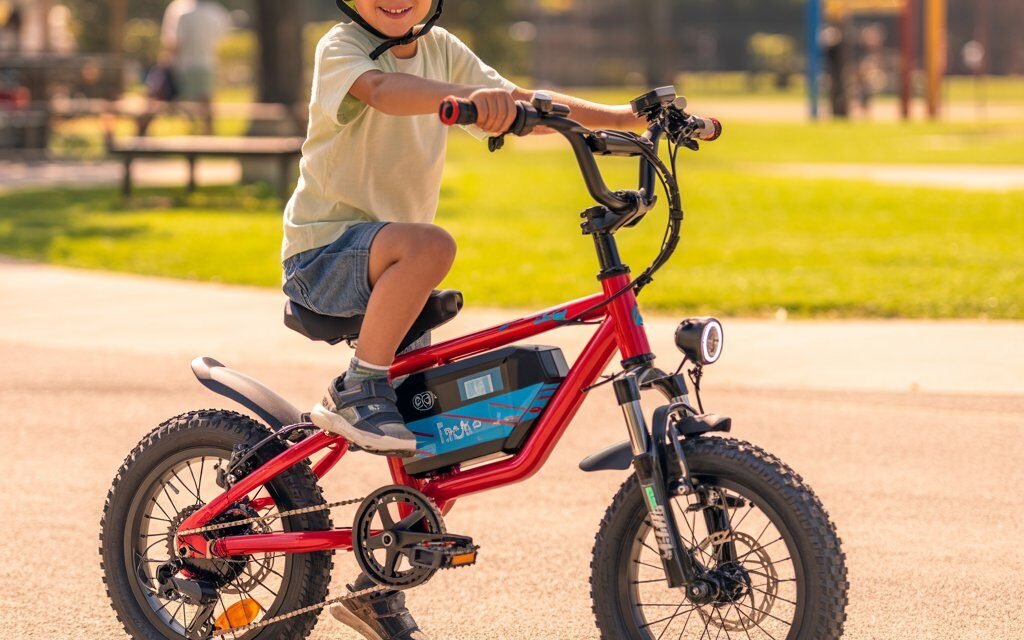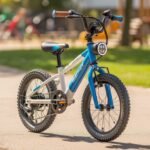The sight of a child mastering a bicycle is a timeless rite of passage, a symbol of growing independence and joy. Today, a new option is joining the traditional pedal bike in the garage: the kids electric bike. These battery-assisted bicycles are capturing the imaginations of young riders, offering a thrilling way to explore, build confidence, and enjoy the outdoors. However, for parents, the world of e-bikes for children can be filled with questions about safety, appropriateness, and value. This comprehensive guide is designed to walk you through everything you need to know, ensuring you can make an informed decision that prioritizes fun and safety for your young rider.
What Exactly is a Kids Electric Bike?
A kids electric bike looks much like a standard bicycle but is equipped with a small electric motor and a rechargeable battery. It’s crucial to understand that these are not miniature motorcycles. Instead, they are pedal-assist bikes, meaning the motor only provides power when the child is pedaling. This assistance makes it easier to climb hills, ride into the wind, and keep up with family members on longer trips, reducing fatigue and increasing the overall enjoyment of the ride. Essentially, it amplifies your child’s pedaling effort, making cycling more accessible and less daunting.
The Benefits: More Than Just a Cool Toy
While the “cool factor” is undeniable, a well-chosen kids electric bike offers several genuine benefits for children and families.
- Encourages Outdoor Activity: In an age dominated by screens, an e-bike can be a powerful motivator to get outside. The added fun of electric assist can turn a reluctant rider into an enthusiastic one, eager to hit the trails or explore the neighborhood.
- Builds Confidence: For children who may be intimidated by hills or longer distances, the pedal-assist feature can level the playing field. It allows them to conquer challenges that might otherwise discourage them, fostering a sense of accomplishment and boosting their self-esteem.
- Promotes Family Inclusion: Families with older children or adults on e-bikes can now ride together more easily. A younger child on a kids electric bike won’t get left behind, making for more enjoyable and cohesive family adventures.
- Teaches Responsibility: Operating an e-bike comes with important lessons about responsibility. Parents can use it as a tool to teach about battery care, mechanical maintenance, traffic safety, and respecting speed limits.
Key Considerations Before You Buy
Choosing the right e-bike for your child is a significant decision. Rushing this process can lead to safety issues and a poor experience. Therefore, carefully consider these factors before making a purchase.
1. Age, Maturity, and Physical Size
This is the most critical factor. E-bikes are not suitable for very young children. Generally, they are designed for kids aged 8 and up. More important than age, however, is your child’s maturity and physical size. Do they have the coordination and cognitive ability to handle a faster-moving vehicle? Can they understand and follow safety rules? Furthermore, the bike must fit them properly. Their feet should be able to touch the ground flatly when seated, and they should be able to comfortably reach the handlebars and brakes.
2. Motor Power and Speed Limits
Kids’ e-bikes have significantly less power than adult models. Look for motors in the 100W to 250W range. More importantly, ensure the bike has a configurable speed limiter. Many models allow parents to cap the top speed, for example, at 10 mph, which can be increased as the child gains skill and responsibility. This feature is essential for starting slow and safe.
3. Battery Life and Safety
Battery range determines how far your child can ride on a single charge. For most kids, a range of 10-15 miles is more than sufficient. The battery should be securely integrated into the frame or easily removable for charging. Always use the manufacturer-provided charger and teach your child basic battery safety, such as not damaging the battery and storing it in a cool, dry place.
4. Build Quality and Brakes
A child’s bike takes a lot of abuse. Look for a robust frame made from aluminum or steel that can handle bumps and minor crashes. The braking system is paramount. Disc brakes, both mechanical and hydraulic, offer superior stopping power compared to traditional rim brakes, especially in wet conditions. This is a critical safety investment.
Essential Safety Gear and Rules
The fun of an e-bike must be underpinned by a strict safety protocol.
- Non-Negotiable Helmet: A properly fitted helmet is an absolute must every single time they ride. Consider additional gear like knee and elbow pads, especially when they are learning.
- Set Ground Rules: Establish clear rules about where they can ride (e.g., bike paths vs. streets), the importance of being aware of surroundings, and a strict “no showing off” policy.
- Supervision is Key: Especially in the beginning, parents should actively supervise their children. Ride with them to model safe behavior and intervene if necessary.
Top Tips for a Positive E-Bike Experience
To ensure the e-bike remains a source of joy, follow these simple tips. Start in a safe, controlled environment like an empty parking lot or a quiet cul-de-sac. Practice starting, stopping, and using the different levels of pedal assist. Additionally, make safety checks a part of your routine. Before each ride, quickly inspect the tires, brakes, and ensure the battery is charged. Finally, use this as an opportunity to bond. Go on family rides, explore new trails together, and celebrate the newfound freedom and adventure that a kids electric bike can responsibly provide.
Frequently Asked Questions (FAQs)
1. What is the right age for a child to get an e-bike?
There’s no universal “right age,” as maturity is more important. Most manufacturers design e-bikes for children ages 8 and up, but the child must demonstrate the coordination and responsibility to handle a faster-moving vehicle.
2. How fast can a kids electric bike go?
Speed varies by model, but most have a top assisted speed between 10-15 mph. The best models come with a parent-controlled speed limiter, allowing you to set a lower maximum speed while your child is learning.
3. Are kids e-bikes safe?
They are as safe as the rider and the precautions taken. Safety is achieved through a combination of factors: choosing an age-appropriate bike, ensuring a proper fit, mandating helmet use, setting strict ground rules, and providing active parental supervision.
4. How long does the battery last on a single charge?
Battery range typically falls between 10 to 20 miles per charge, depending on the terrain, the rider’s weight, and how much assist is used. This is usually more than enough for a child’s typical riding session.
5. Do kids e-bikes require a lot of maintenance?
Maintenance is similar to a regular bike. Regular checks of tire pressure, brakes, and chain lubrication are needed. The electrical components are generally sealed and require little upkeep, though it’s wise to have the bike serviced at a bike shop annually.










